Discover the different types of painting techniques that have captured the imagination of famous artists and art lovers alike throughout history. From abstract painting to realistic to miniature painting, read about the unique characteristics of each genre.

Welcome to the colorful world of art! From the delicate brushstrokes of watercolor to the bold and vibrant hues of acrylic, paintings have the ability to evoke emotions and capture moments in time. At least, I, for one, am always enchanted by a good painting!
Whether you're an art enthusiast or a curious newbie, today I will take you on a journey through various painting techniques and styles. Who knows? You may discover a whole new world of artistic possibilities!
Timeless Beauty of Classic Masterpieces
Ah, classic masterpieces! These painting styles have stood the test of time and continue to captivate audiences even today.
1. Baroque

This art style emerged in the 17th century and is characterized by dramatic lighting, vivid colors, and ornate details. Baroque artists sought to convey intense emotion and movement, often depicting religious or historical scenes.
One of the most well-known Baroque artists is Gian Lorenzo Bernini, a famous artist of sculpture and architecture. His works, such as The Ecstasy of Saint Teresa, showcase the Baroque painting style with their intricate details and dramatic poses.
Overall, the Baroque style represented a departure from the restrained classicism of the Renaissance. Its emphasis on emotion and movement paved the way for the expressive painting styles that followed.
2. Byzantine

Byzantine art is a unique blend of Greek, Roman, and Christian traditions, resulting in a distinctive art style that was both spiritual and worldly. One of the hallmarks of Byzantine art is the use of icons, which were paintings of religious figures meant to be used for devotional purposes. These icons were often adorned with gold leaf and precious stones, giving them a sense of otherworldliness.
But Byzantine art wasn't just limited to icons - it also included mosaics, frescoes, and illuminated manuscripts. These works were often commissioned by the wealthy and powerful, who wanted to show off their purity and wealth.
And while Byzantine art may seem ornate and intricate, it was also highly symbolic, with each element carefully chosen to convey a particular meaning.
3. Renaissance Art Style

Speaking of the Renaissance, this period from the 14th to 17th centuries marked a resurgence of classical ideals and artistic innovation. Famous artists such as Leonardo da Vinci and Michelangelo produced some of the most iconic works of all time during this era. Renaissance art is characterized by its realism, perspective, and attention to detail.
Renaissance art was not only limited to paintings but also included sculpture, architecture, and other painting mediums. It reflected a renewed interest in the classical past, as well as a focus on humanism and individualism.
One of the most famous works of Renaissance art is Leonardo da Vinci's Mona Lisa, known for its enigmatic smile and use of sfumato, a technique that creates a soft, smoky effect.
4. Rococo

Rococo art is known for its extravagant style and delicate details, often featuring pastel colors and intricate designs. It starkly contrasts the more subdued nature of watercolor paintings, which rely on the transparency of pigments to create a soft, dreamy effect on the canvas.
However, despite these differences, there is a certain charm to be found in combining these two painting styles. Imagine a rococo-inspired portrait painting with delicate watercolor washes highlighting the subject's features.
Or perhaps a landscape painting with a rococo-inspired border, painted in watercolor hues to create a sense of depth and texture. The possibilities are endless for combining different art styles and techniques. Experimenting with different painting mediums is a great way to explore the boundaries of what's possible in art.
If you're looking for a lighthearted escape from the seriousness of other art movements, Rococo might be just what you need!
5. Romanticism

Romanticism was a reaction to the rationalism of the Enlightenment. This 19th-century painting style emphasized emotion, individualism, and imagination. Romantic paintings often featured sublime landscapes and historical or mythological scenes.
Romanticism was a period of rebellion against the prevailing social norms of the time, and artists sought to break free from the strict conventions of academic art. They celebrated nature, often depicting it in all its grandeur and beauty, and embraced the individual spirit over conformity.
One of the most iconic Romantic artists is Eugene Delacroix, whose works such as Liberty Leading the People and The Death of Sardanapalus convey a sense of emotional intensity and passion. His use of bold colors and dynamic compositions capture the essence of Romanticism.
6. Trompe-l'œil

Trompe-l'œil is a French term meaning "deceive the eye," and that's exactly what this art style aims to do. Trompe-l'œil paintings are so realistic that they appear three-dimensional or even real. This painting style has been used throughout history to create optical illusions and trick the viewer's perception.
Trompe-l'œil paintings often feature everyday objects, such as a letter or a book, as if they were sitting right in front of you. Some famous artists have even taken it a step further, creating entire rooms or scenes that look like you could walk right into them. The level of detail and precision required to create a convincing trompe-l'œil painting style is truly remarkable.
This painting technique has been popular throughout history, particularly in the Baroque and Renaissance periods. Even today, trompe-l'œil can be found in modern arts and advertising. It's an art style that truly captures the imagination and challenges our perceptions of reality.
7. Gothic Art
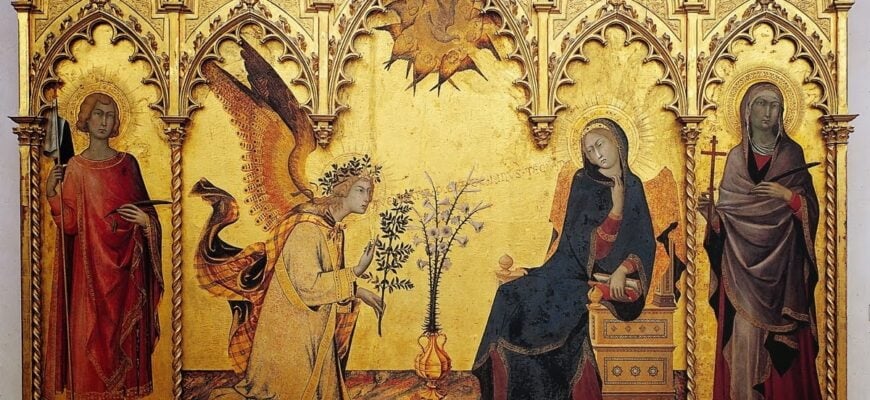
Gothic art emerged in the late Middle Ages and is characterized by its ornate, decorative style. Gothic paintings often feature religious subjects and were used to convey a sense of awe and reverence. The intricate details and towering structures of Gothic architecture are also reflected in the style's paintings. Gothic art is a fascinating and dramatic style that has captured people's imaginations for centuries.
One of the most striking features of this art form is its intricate and delicate details, which are often enhanced by the use of bright colors and elaborate patterns. Gothic art was also used to tell stories, particularly religious ones. Many Gothic paintings depict scenes from the Bible or the lives of saints.
Overall, Gothic art is a striking and powerful style that has impacted the art world. Its influence can be seen in many different art styles, and its legacy continues.
These classic masterpieces are a testament to the enduring power of art and the creativity of the human mind.
From Chaos to Precision: Modern Styles in Painting
Let's dive into the world of modern painting movements! From the colorful chaos of Fauvism to the mathematical precision of Geometric Abstraction, there's a painting style for everyone to create art, appreciate and enjoy.
8. Abstract Expressionism

First up on our list of modern movements in painting technique is Abstract Expressionism. This art style emerged in the 1940s in the United States and quickly became one of the most influential art movements of the 20th century.
Abstract Expressionist paintings are characterized by their large size, bold colors, and spontaneous brushwork. The famous artists who created these works sought to convey emotion and to feel through their art rather than depict recognizable objects or scenes.
Some famous Abstract Expressionist painters include Jackson Pollock, Mark Rothko, and Willem de Kooning. Their works are still highly prized by collectors today and can be seen in museums worldwide.
9. Cubism

Next is Cubism, which developed in the early 20th century in France. This movement is known for its use of geometric shapes and the fragmentation of form.
Cubist painters sought to depict the world from multiple viewpoints rather than a single, fixed perspective. This resulted in works that appear almost abstract at first glance but, upon closer inspection, reveal recognizable objects and scenes.
Pablo Picasso and Georges Braque are two of the most famous Cubist painters. Their works continue to inspire artists today and can be seen in many major museums.
10. Dadaism

Welcome to the chaotic and irreverent world of Dadaism! This movement emerged in the early 20th century as a response to the horrors of World War I. It rejected traditional artistic conventions to embrace randomness, absurdity, and nonsense.
Dada artists sought to undermine the seriousness of the art world by creating intentionally nonsensical pieces, often incorporating everyday objects or even garbage into their works. Some of the most famous Dada works include Marcel Duchamp's "Fountain," which was simply a urinal turned upside down and signed with a fake name, and Hannah Höch's photomontages, which blended images from popular culture into surrealist collages.
11. Fauvism

Fauvism was a French painting style that emerged in the early 20th century and is characterized by its use of intense, saturated hues and its rejection of traditional representational techniques. Fauvist artists aimed to capture the emotional impact of color rather than realistic depictions of the world around them.
One of the defining characteristics of Fauvism is its use of vibrant watercolors. Famous artists like André Derain and Henri Matisse often used watercolor oil paints to create bold and expressive works that capture the intensity of their subjects.
For example, Derain's "The Dance" features bright oranges, pinks, and yellows in a fierce depiction of a dance scene. At the same time, Matisse's "Joy of Life" portrays a group of nude figures in a lush, colorful landscape painting using vivid watercolor washes.
These works showcase the unique ability of watercolors to convey emotion through color and brushwork, which made them a natural fit for the Fauvist movement.
12. Geometric Abstraction

Looking for something a bit more cerebral? Then you might enjoy the clean lines and mathematical precision of Geometric Abstraction. This style, which emerged in the early 20th century, was characterized by its use of simple geometric shapes and its rejection of figurative art.
Geometric Abstraction artists aimed to create a sense of order and structure through their works, often using precise, repetitive patterns and shapes to achieve this effect.
Some of the most famous Geometric Abstraction pieces include Kazimir Malevich's "Black Square," which is simply a black square on a white background, and Piet Mondrian's "Composition II in Red, Blue, and Yellow," which features bold, primary colors arranged in a grid-like pattern.
13. Minimalism

Less is more, as they say, and that's certainly the case with Minimalism. This movement, which emerged in the mid-20th century, is characterized by its use of simple, stripped-down forms and its rejection of ornamentation and excess.
Minimalist artists aimed to create works that were as basic and essential as possible, often using industrial materials and emphasizing the physicality of the artwork itself.
Some of the most famous Minimalist pieces include Donald Judd's untitled boxes, which are rectangular metal or plexiglass forms, and Dan Flavin's fluorescent light installations, which use light as the medium for the artwork.
14. Neo-Expressionism

Finally, if you're looking for something with a bit more emotional punch, then Neo-Expressionism might be up your alley. This movement, which emerged in the 1980s, was a reaction against the cool, detached aesthetics of Minimalism and other modernist painting styles.
Neo-Expressionist artists aimed to create works that were raw, visceral, and emotionally charged, often using intense colors and thick, gestural brushstrokes. Some of the most famous Neo-Expressionist pieces include Jean-Michel Basquiat's graffiti-inspired paintings, which blend street art with fine art, and Anselm Kiefer's massive, layered canvases, which explore themes of history and memory.
So there you have it, folks - a quick tour of some of the most exciting modern painting movements! Whether you prefer the emotional punch of Neo-Expressionism or the clean lines of Minimalism, these painting styles continue to inspire and captivate artists and art lovers worldwide.
Realism and Beyond
The world of art is vast and varied, with countless painting styles and movements that have emerged throughout history. Each movement has its unique characteristics and techniques and has been shaped by the social, cultural, and political forces of its time.
15. American Impressionism

One of the most prominent movements in the late 19th century, American Impressionism, was heavily influenced by the French Impressionist movement. American artists who Impressionism inspired aimed to capture the essence of a moment in time through the use of light and color.
They often depict scenes from everyday life, such as landscapes, urban settings, and leisure activities. One of the most notable American Impressionists is Mary Cassatt, who is well-known for her delicate and intimate portraits of women and children.
Another famous American Impressionist is Childe Hassam, who was known for his vibrant and colorful paintings of New York City, capturing the bustling energy of the city in a way that was both lively and captivating.
16. Tonalism

Tonalism is an American art style that emerged in the late 19th century. This movement is about creating art emphasizing color and light to create a mood or atmosphere.
Tonalists often depicted landscapes, focusing on the mood and emotion that the scene evokes rather than the specific details of the scene. Tonalism is known for its muted colors and hazy, atmospheric quality.
Some of the most well-known Tonalists include James McNeill Whistler, who created many paintings of the Thames River in London, and George Inness, who created many paintings of the American landscape.
17. Social Realism
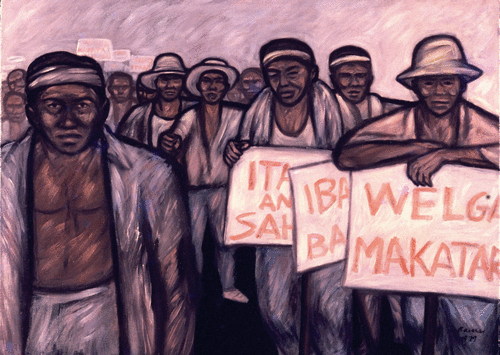
Social Realism is an art movement that emerged in the 1930s. This movement is all about creating art that reflects the social and political realities of the time. Social Realists often depicted everyday people, including the working class and marginalized communities.
Social Realism often deals with issues of poverty, inequality, and injustice. Some of the most well-known Social Realists include Diego Rivera, who created many murals that depicted the struggles of the working class, and Ben Shahn, who created many paintings that addressed issues of social and political justice.
Through their powerful and thought-provoking works, Social Realists sought to shed light on the harsh realities of society and inspire change toward a more just and equitable world.
18. Pointillism
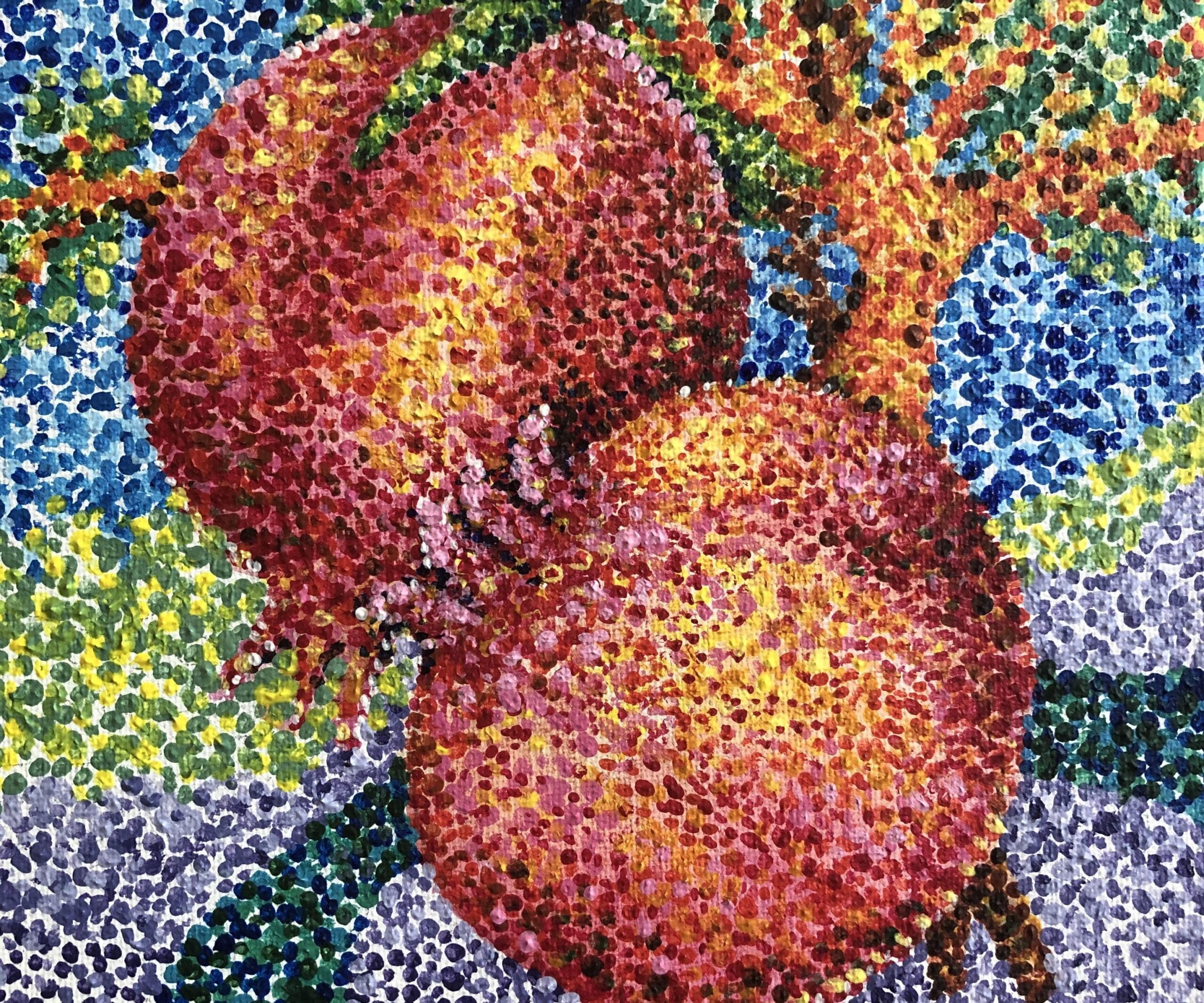
Pointillism is an art movement that emerged in the late 19th century. This movement is about creating paintings using small dots of color that blend together to create a larger image.
Pointillists use precise brushwork and attention to detail to create paintings that are incredibly detailed and vibrant. Pointillists often depicted everyday scenes like landscapes, cityscapes, and portraits.
One of the most well-known Pointillists is Georges Seurat, who created many paintings using this technique, including his famous work "A Sunday Afternoon on the Island of La Grande Jatte." Pointillism produces paintings that are both dynamic and captivating, with a luminous quality that is unmatched by other techniques.
19. Hyperrealism

Hyperrealism is all about creating paintings that look almost like photographs. Hyperrealists use precise brushwork and attention to detail to create paintings that are so realistic they can be mistaken for photographs.
Hyperrealism often depicts everyday scenes like cityscapes, still life paintings, and portraits. A prominent Hyperrealist is Audrey Flack, who is known for her incredibly detailed still-life paintings that are created by painting layer upon layer of paint to create a sense of depth and texture.
Hyperrealism requires a high level of technical skill and a keen eye for detail. Hyperrealists often spend countless hours studying their subjects, photographing, and making sketches before beginning their paintings. The resulting works are often larger than life and create a sense of wonder and amazement in viewers who may question whether they are looking at a painting or a photograph.
20. Regionalism

Regionalism is an American art movement that emerged in the 1930s. This movement is about creating art that reflects the cultural traditions and values of specific regions within the United States.
Regionalists often depicted rural life, including landscapes, people, and animals. Some of the most famous Regionalists include Grant Wood, known for his iconic painting "American Gothic," and Thomas Hart Benton, who created many paintings of the American Midwest.
By emphasizing the importance of regional identity and culture, Regionalists helped to establish a sense of national pride and unity during a time of significant change in America. Today, Regionalism remains an integral part of American art history, serving as a reminder of the rich diversity and complexity of American culture.
21. Contemporary Realism

Contemporary Realism refers to the art movement that emerged in the late 20th century and is still prevalent today. This movement is all about creating art that truly represents the world around us.
Contemporary Realists use precise brushwork and attention to detail to create paintings that look almost like photographs. You'll often find them painting everyday scenes like cityscapes, still lifes, and portraits.
A prominent Contemporary Realist is Chuck Close, who is known for his massive portraits that are created by meticulously painting individual squares to create a larger image.
22. Early American Folk Art
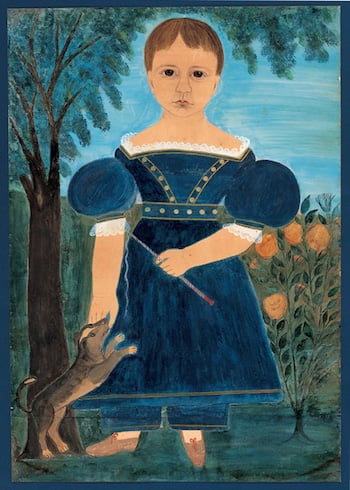
Early American Folk Art is a type of painting technique that emerged in the late 18th and early 19th centuries. This art was created by everyday people who didn't have formal art training. Instead, they used their unique painting styles and techniques to create arts that reflected their everyday lives.
Early American Folk Art often depicts everyday scenes like farm life, rural landscapes, and portraits of family members. One of the most well-known Early American Folk Artists is Edward Hicks, who created many paintings of animals, including his famous "Peaceable Kingdom" series.
Each painting style and movement has its unique story to tell, and through the work of talented artists, we can glimpse into the past and understand the world from their perspective. By studying and appreciating these painting styles, you can gain a greater understanding and appreciation of the diverse and rich history of painting.
Artistic Traditions in Various Cultures
Famous artists often utilize different tools and techniques to achieve their desired effects. For example, some painters use a palette knife for more precise lines and texture. Others may use a heat gun to create intricate designs in sandpainting or to speed up the drying process of their work.
In addition, some painters may use a varnish or emulsion to add a glossy finish to their paintings, while others may focus on waterproofing their work to preserve it for a longer period.
In terms of materials, painters have used a variety of substances throughout history. Milk, for instance, has been used in casein paint, a type of paint that dries quickly and produces vibrant colors.
Graphite, on the other hand, is a common material used in pencil drawings and can be manipulated to create various shades of gray. Textiles have also been used in painting, such as silk in Chinese art, to add texture and depth to works.
Furthermore, different regions and cultures have their unique traditions and styles of painting. Japanese painting, for example, often incorporates calligraphy and gesture, while East Asian art may focus on the concept of balance and harmony. The Netherlands, on the other hand, has a rich history in figure painting, while Paris has been a hub for modern art and innovation.
Visual Art Forms
Visual art has always been a captivating and inspiring medium for people, with each form showcasing the artist's unique vision and creativity. From bold acrylic paintings to delicate ink drawings, every artwork has its charm.
Watercolor has been a favorite medium for many famous artists throughout history. So, grab your paintbrush and immerse yourself in the world of watercolor!
23. Acrylic Paints
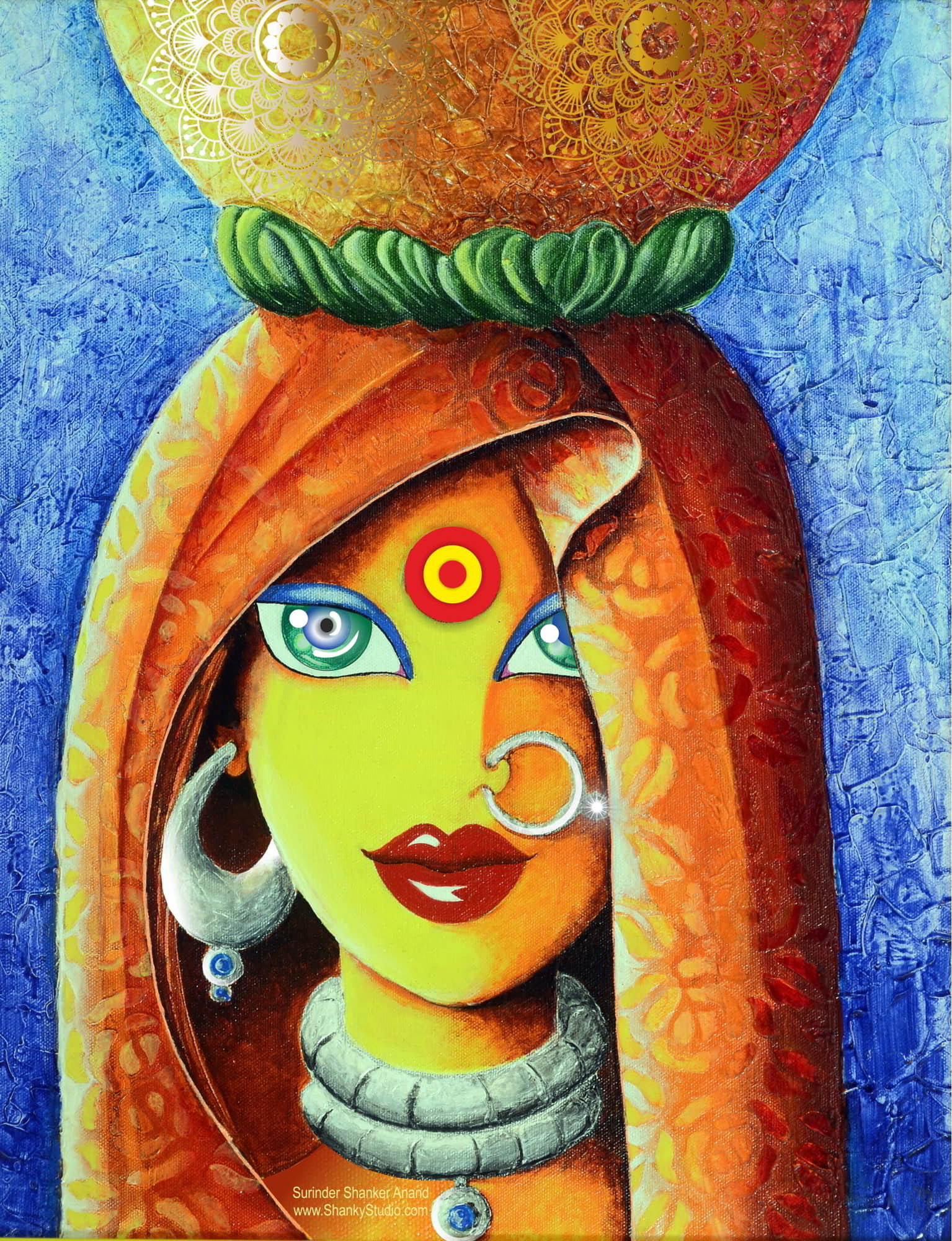
Acrylic painting is a famous painting technique that uses water-soluble acrylic paints. Acrylics can be used on various surfaces, including canvas, paper, wood, and even metal.
One of the reasons why acrylic painting medium is so popular is because of the range of effects it can create. From bold and bright colors to subtle and muted tones, acrylic paint can create various textures and finishes.
Acrylic paint can be diluted with water to create a watercolor-like effect, or it can be layered to create a thick and textured surface. With its versatility, fast-drying properties, and easy cleanup, acrylic painting is a perfect choice for creating beautiful and long-lasting artwork.
24. Charcoal Drawing
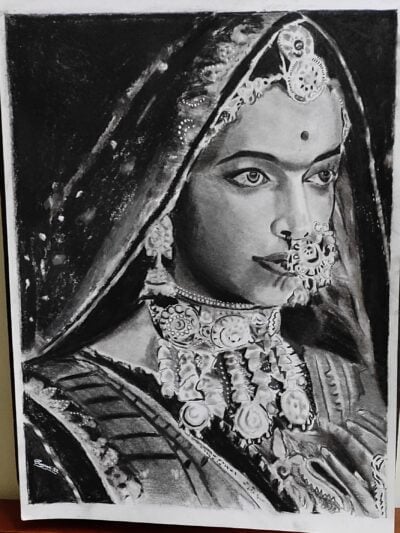
Charcoal drawing is a traditional technique that uses charcoal sticks to create dark, smudgy lines. This technique is perfect for creating atmospheric pieces of art that evoke a sense of mystery and emotion.
Charcoal drawing is also known for its versatility, allowing artists to create various effects by varying the pressure and texture of the charcoal on the surface. It's an excellent technique for capturing the mood and tone of a subject, mainly when working with subjects like portraits, landscapes, and still life.
Artists often favor charcoal for its ability to create dramatic contrast and depth, and its forgiving nature allows for corrections and adjustments to be made easily. Whether you're a beginner or an experienced artist, charcoal drawing is a skill worth mastering.
25. Egg Tempera Paintings
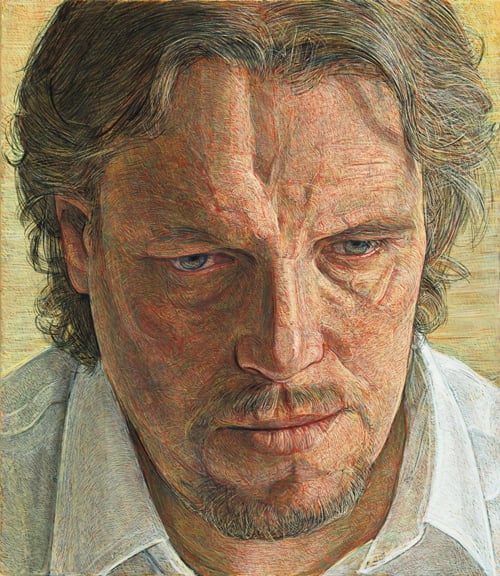
Egg tempera paintings are a fascinating technique used for centuries to create stunning works of art. It's known for its unique texture and luminous finish, which makes it a popular choice for artists who want to create works of art with a timeless feel.
One of the most distinctive features of egg tempera painting medium is using egg yolk as a pigment binder. This gives the painting a rich, creamy texture that's hard to achieve with other types of painting. In addition, egg tempera dries quickly, which allows artists to create intricate details and fine lines with precision.
26. Watercolor Painting
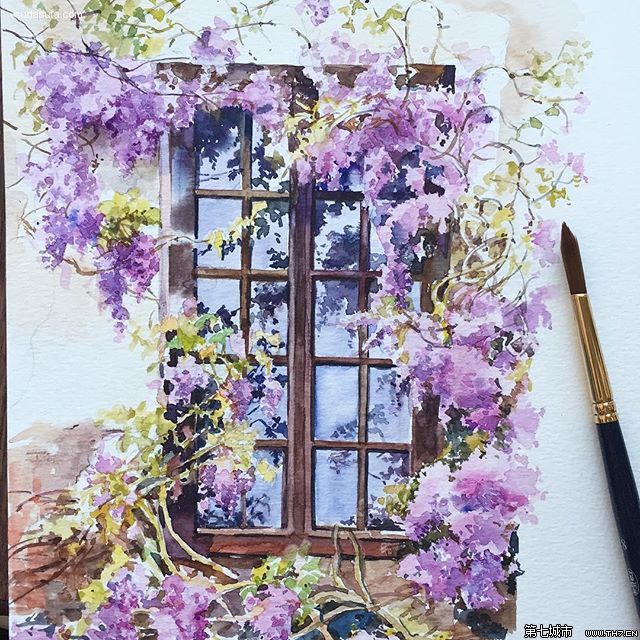
Watercolor painting is a beautiful medium that offers a lot of creative freedom to artists. With their unique properties, watercolors can create various effects, from delicate washes to bold, vibrant colors. This versatility makes it a popular choice for artists who enjoy experimenting with different techniques and styles.
The watercolor painting medium also offers a lot of room for experimentation and creativity. Because the paint is water-soluble, it can be used in various ways, from thin washes to thick, opaque layers. Artists can also use various tools, such as brushes, sponges, and even salt, to create unique textures and effects.
Overall, watercolor painting is a wonderful medium that offers a lot of creative possibilities to artists. Whether you're a beginner or an experienced artist, there is always something new to learn and explore with watercolors. So why not give it a try and see what beautiful creations you can come up with?
27. Encaustic Painting Style
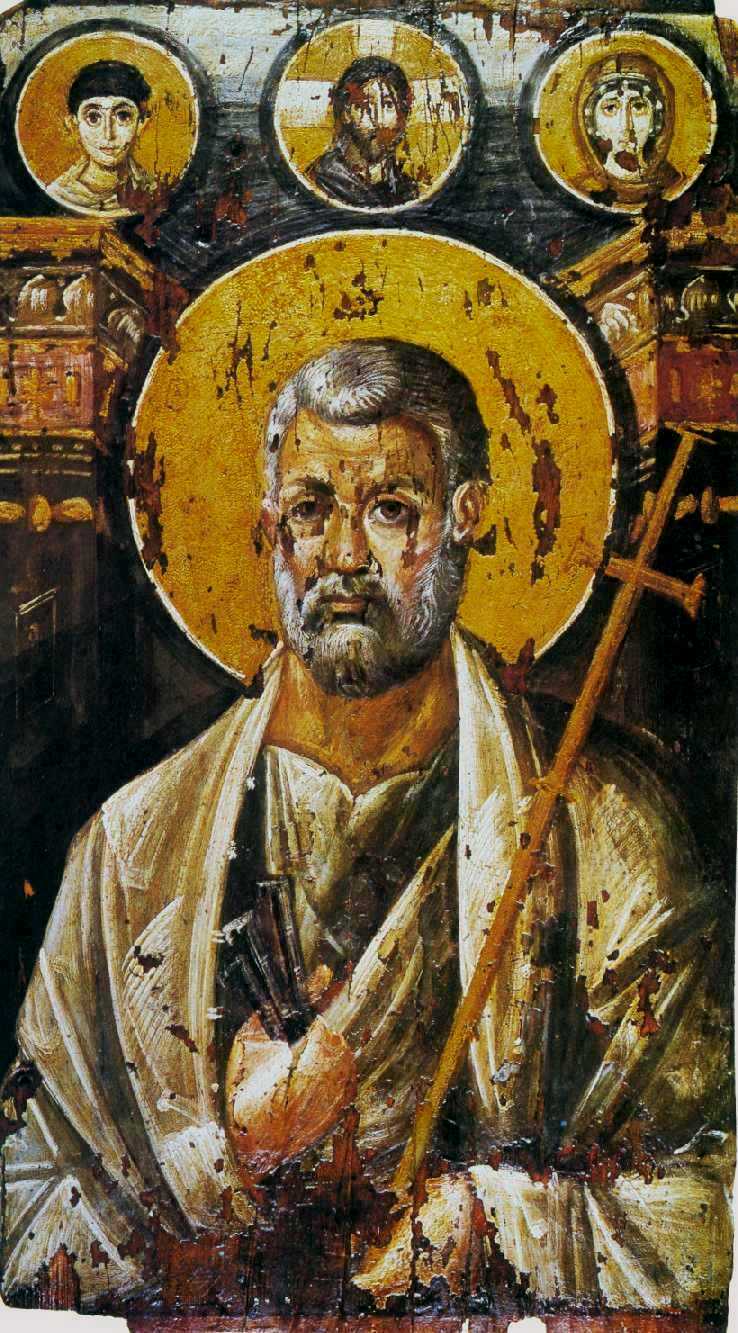
Encaustic painting is an incredibly versatile medium that allows artists to experiment with various textures and colors to create unique works of art.
The encaustic painting technique involves mixing pigments with melted beeswax and then applying the mixture to a surface, typically a wooden panel painting. The wax is then heated and fused onto the surface, creating a durable, long-lasting encaustic painting.
One of the advantages of encaustic painting is that the wax can be layered and built up to create a rich, textured surface with depth and dimension. The hot wax painting can also be carved and manipulated with tools to create intricate designs and patterns. Encaustic painting allows artists to create various effects and explore techniques to achieve their desired results.
28. Fresco Painting Medium
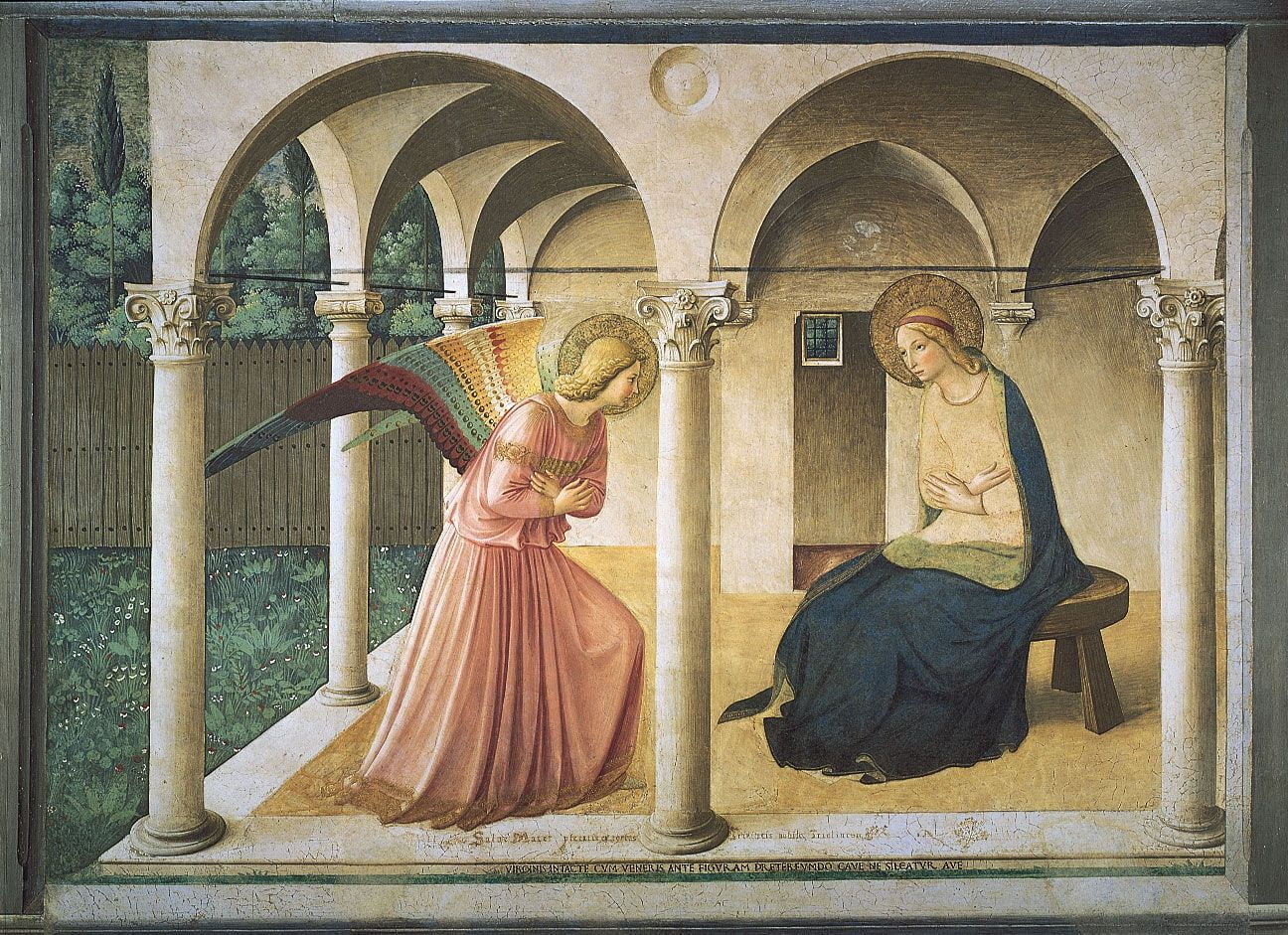
This ancient technique has been around for centuries and is still used today by many artists. So, what exactly is fresco painting? Well, it's a form of painting where pigment is applied to wet plaster on a wall or ceiling, creating a stunning mural lasting hundreds of years.
One of the most impressive things about the fresco painting technique is how it captures light and color. The wet plaster absorbs the pigment, making the colors part of the wall. This creates a unique depth and richness that can't be achieved with other painting techniques.
Another fascinating aspect of the fresco painting technique is the history behind it. This technique was used by the ancient Egyptians, Greeks, and Romans and was later revived during the Italian Renaissance. Many of the most famous frescoes in the world can be found in churches and cathedrals throughout Europe.
29. Gouache Painting Medium

Gouache painting is a medium that is often overlooked, but it definitely deserves some attention. It is a type of opaque watercolor used by artists for centuries.
One of the unique qualities of gouache is its versatility. It can be used for various applications, from illustration and design work to fine abstract art. Gouache paintings have a distinctive look that sets them apart from other painting mediums.
The opaque nature of the paint means that the artist can paint light colors over dark without needing multiple layers. This makes gouache painting a great choice for creating vibrant, colorful compositions.
30. Ink Wash Painting
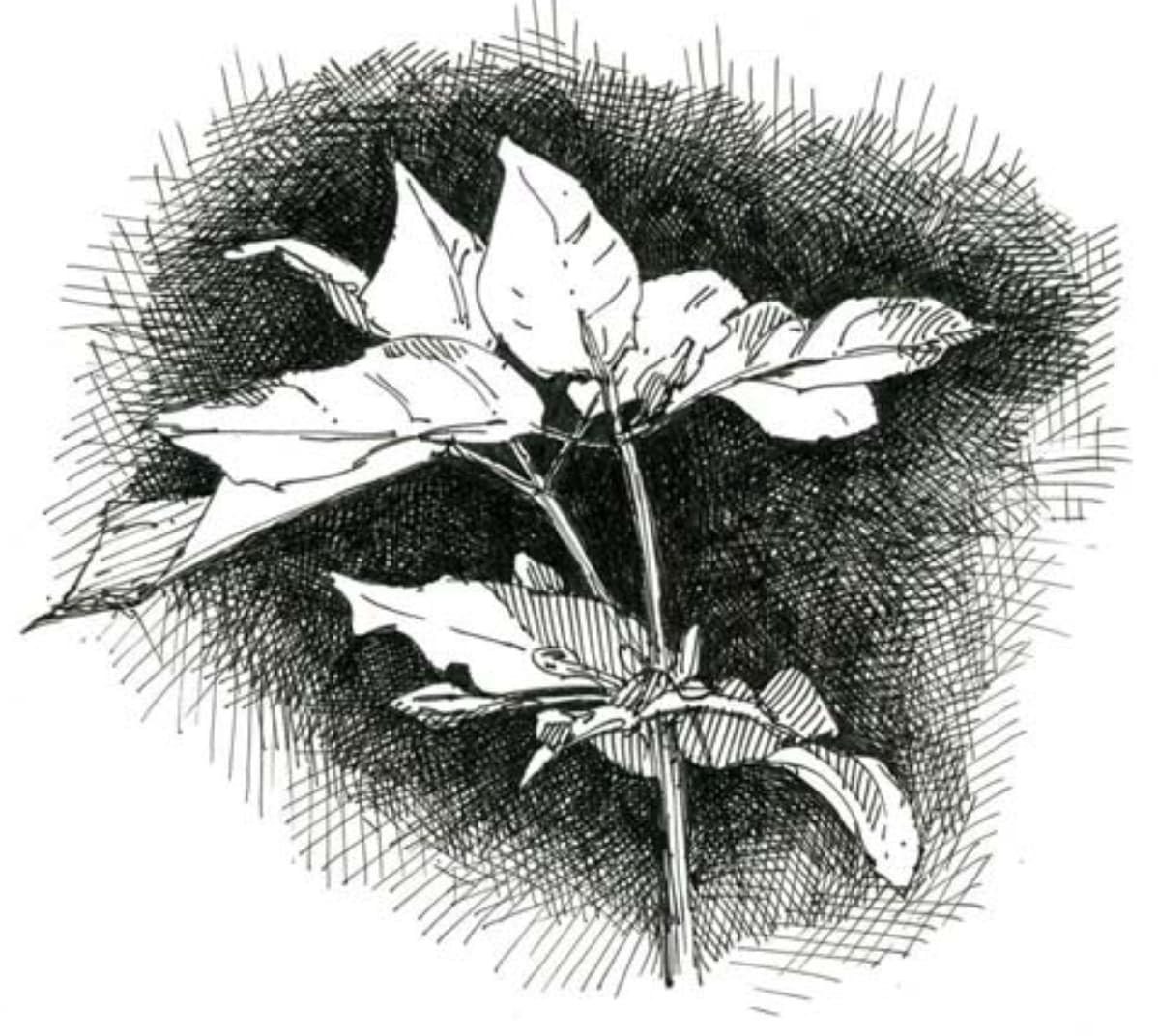
Ink Wash Painting is one of the oldest and most versatile forms of artistic expression out there. It involves using various tools to create lines and shapes with ink on a surface, such as paper or canvas. The beauty of ink drawing lies in its simplicity and ability to convey various emotions and moods.
Many artists work exclusively with ink, while others use it as a starting point before moving on to other painting mediums. Some artists combine ink with watercolors or oil paints to create stunning mixed-media pieces.
Ink drawing is a fantastic way to experiment with different techniques and styles, and it's accessible to artists of all levels. So why not grab your pen or brush and start creating your own ink masterpieces today?
31. Oil Painting

The oil painting technique is a timeless and beloved form of the abstract art medium that has been around for centuries. It's a medium that allows for incredible depth, texture, and richness of color. The process of oil painting involves mixing pigments with oil, usually linseed oil, to create a paint that can be applied to a canvas or other surface.
But, as with any art form, the oil painting technique takes time and practice to master. From choosing the right brushes and oil paints to understanding color theory and composition, there are many elements to consider. However, the beauty of oil painting lies in the process itself. The tactile experience of mixing colors and applying paint to a surface can be both meditative and exhilarating.
32. Pastel Painting Technique

One of the most appealing aspects of a pastel painting is its ability to capture the softness and delicacy of subjects such as flowers and landscapes. Pastel paintings have a distinctive, powdery texture that gives them a unique visual appeal. They are also known for their ability to create vibrant, luminous colors that can bring a painting to life.
However, pastel painting can be challenging, as it requires a delicate touch and a great deal of patience. Pastels are a dry medium, and unlike paint, they cannot be mixed on the canvas. Additionally, the powdery texture of pastels can make them difficult to control, so it takes skill and practice to master this medium.
Despite the challenges, pastel painting remains a famous and beloved medium among artists and art enthusiasts alike. It offers a unique and expressive way to capture the beauty of the world around us, and its versatility allows for a wide range of painting styles and techniques.
Visual art forms are a beautiful and dynamic way for artists to express their creativity and share their unique perspectives with the world. No matter the medium, each piece tells a story and invites the viewer to connect with the artist and their message. So, grab your brushes and let your imagination run wild!
Futuristic Flair
As the world becomes increasingly complex and technology advances, artists have embraced futuristic themes in their work. From the streets to the galleries, there is a growing fascination with the possibilities of the future.
33. Graffiti Art
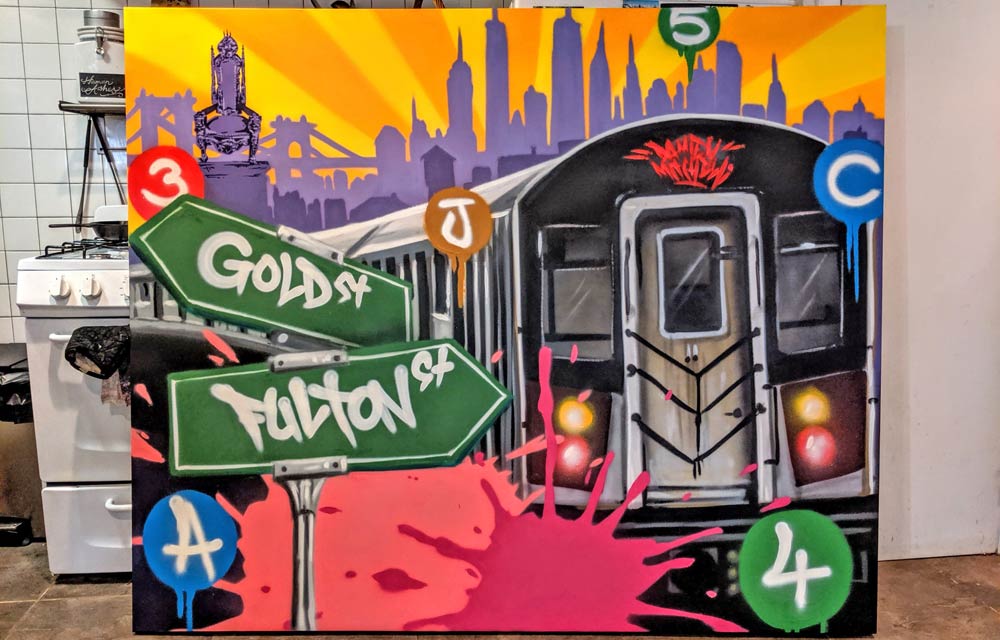
A graffiti artist does more than just spray-painting random words or images on walls. It's an art form that's been around for decades, and it's only getting better. The vibrant colors and intricate designs are a feast for the eyes, and they have the power to transform dull, drab buildings into works of art.
One of the most exciting things about graffiti art is its temporary nature. You never know when or where the next masterpiece will appear. It could be on a busy street corner or tucked away in a hidden alley. Either way, the thrill of discovering a new piece of graffiti art is like finding a hidden treasure.
In short, graffiti art is more than just a bunch of words and images on a wall. It's a dynamic and evolving art form that has captured the imagination of graffiti artists and art lovers alike. So next time you're out and about, keep your eyes peeled for a piece of graffiti art. Who knows what you might discover?
34. Afrofuturism
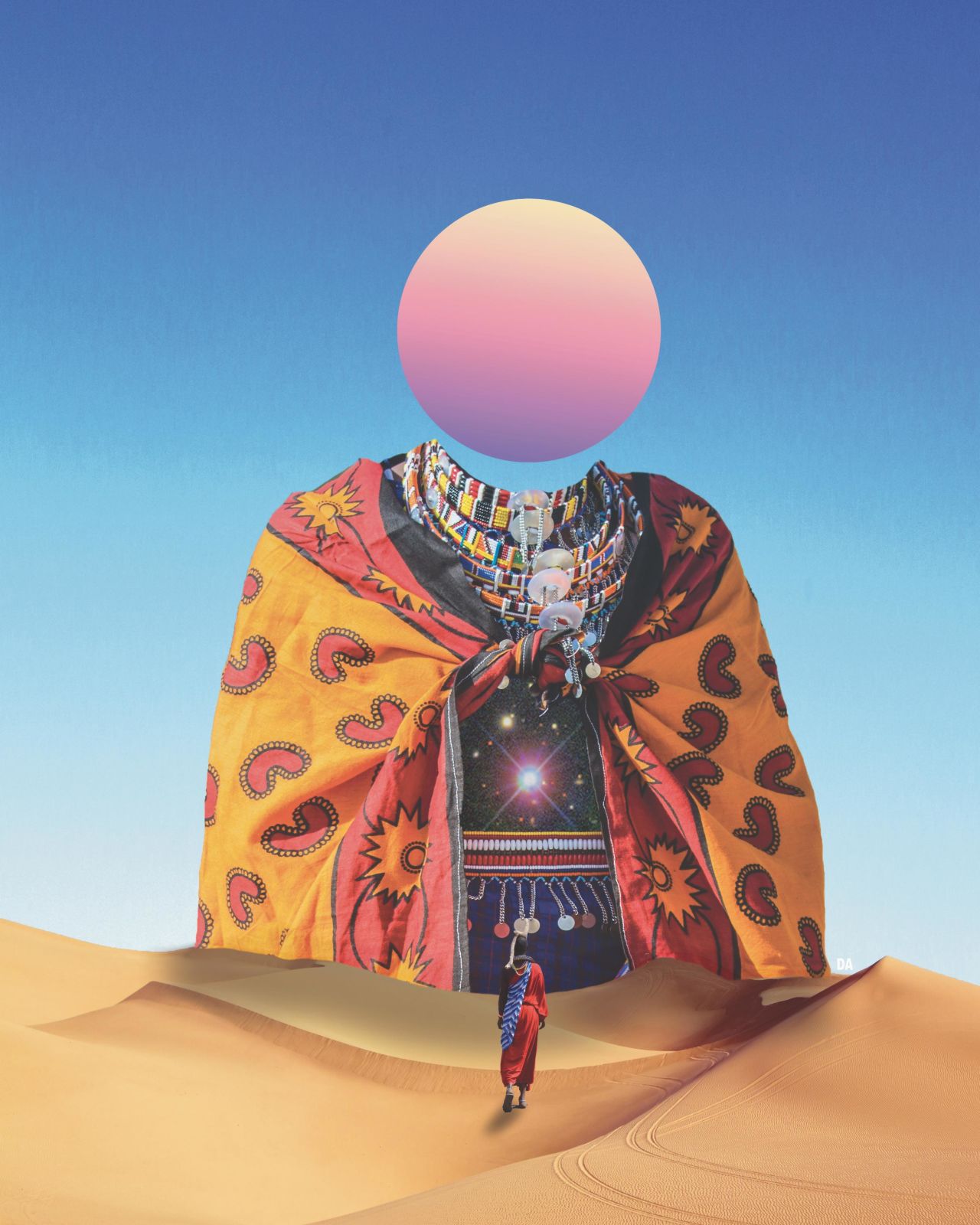
Afrofuturism is an exciting artistic movement that combines elements of science fiction, fantasy, and Afrocentricity. It's a celebration of African culture and identity while also exploring the future of black people in the world. Think of it like an imaginative blend of Sun Ra, Octavia Butler, and George Clinton, with a healthy dose of funk and soul thrown in for good measure
One of the coolest things about Afrofuturism is how it uses science fiction and fantasy to imagine new possibilities for black people. In a world where black people are often portrayed as marginalized or oppressed, Afrofuturism creates a space where black people can be powerful, creative, and visionary. It's a way to dream of a future where black people are at the forefront of innovation and progress.
35. Street Art
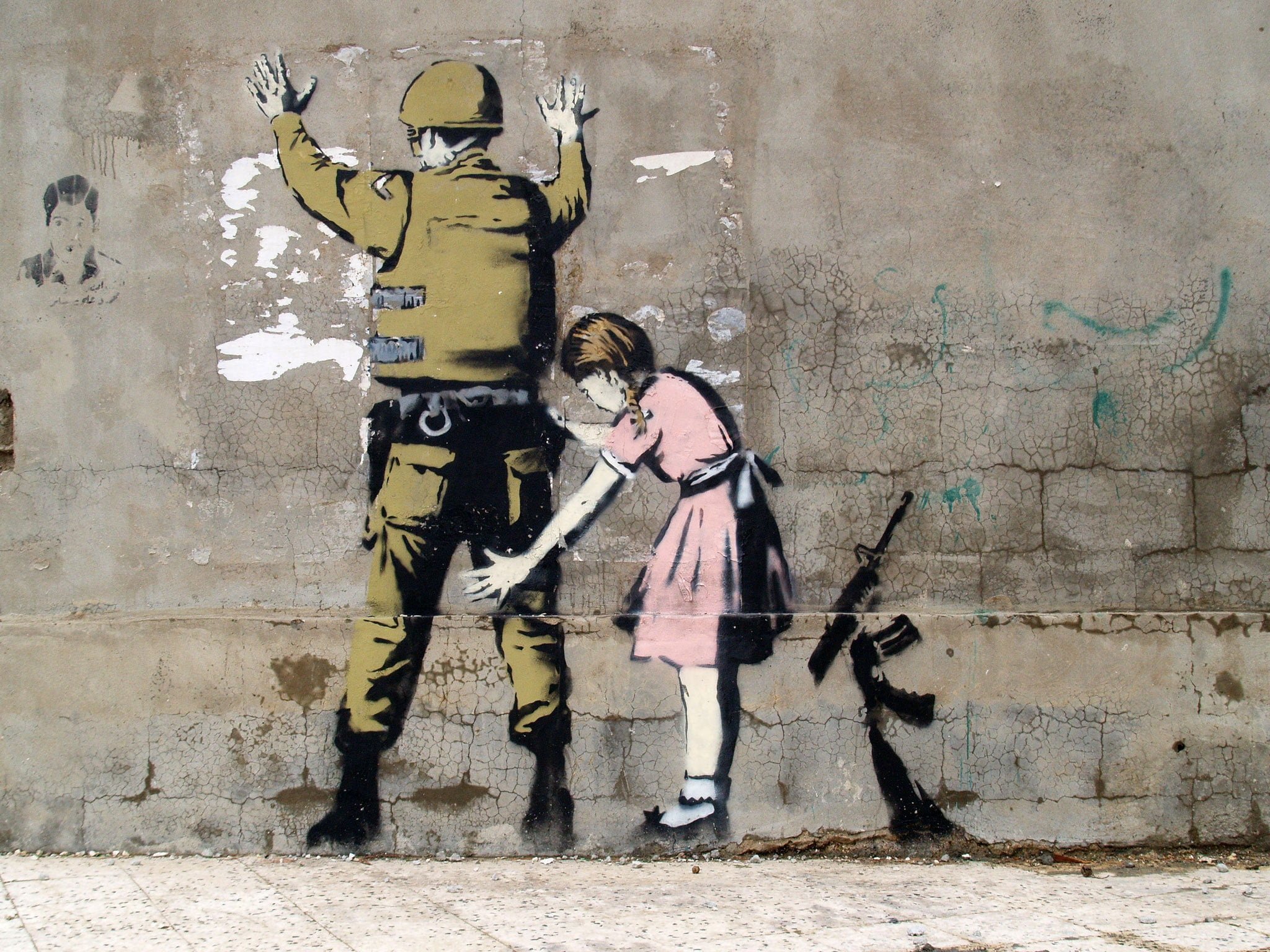
Street art is a form of creative expression that takes art from the confines of a gallery and puts it on the streets. It's an art form that thrives in public spaces and encourages artists to create pieces that speak to the community. Whether it's a giant mural or a small sticker, street art is an important part of modern culture.
Another great thing about street art is that it's often created by anonymous artists. This anonymity adds an air of mystery and intrigue to the art form, making it even more fascinating to observe. It's also a way for artists to escape the traditional art world, which can be exclusive and limiting.
Whether it's through the raw energy of graffiti, the thought-provoking messages of street art or the Afrofuturist visions of black artists, the theme of the future has inspired a wide range of artistic expressions. As we continue to look to the horizon, we can expect to see even more exciting and innovative creations that push the boundaries of what we thought was possible.
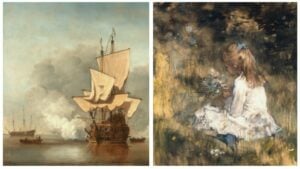
Diverse World of Painting: Styles, Techniques, and Influential Artists
Various types of painting include ink wash painting, Chinese painting, cave painting, spray, fresco-secco, portrait miniature, en plein air, mixed media, and Western painting. These styles utilize a range of materials, such as aerosol, chalk, vellum, resin, and vitreous enamel paint. Famous artists use different techniques, including chiaroscuro, texture mapping, and drip painting, to achieve their desired effect.
Painters throughout history, including Michelangelo, Rembrandt, Claude Monet, Vincent van Gogh, Salvador Dalí, Caravaggio, Johannes Vermeer, Wassily Kandinsky, Andrea Mantegna, Edvard Munch, Sistine Chapel, Andy Warhol, have contributed to the diverse world of painting.
Different cultures, such as Japan, Italy, China, and Greece, have their own unique artistic traditions, including calligraphy, Veduta, Warli, and Madhubani art. In contemporary times, technology has revolutionized the art universe with the use of computer programs, water-miscible oil paint, and aerosol spray dispensers. Painting can be a powerful form of expression, conveying messages, allegories, and emotions.
Expressionism is a modernist movement in art that originated in Germany in the early 20th century. It’s characterized by bold colors, exaggerated forms, and emotional intensity, with the aim of expressing the artist’s inner feelings and experiences. Artists use space in their paintings to create a sense of depth, perspective, and composition. Traditional Indian painting uses a variety of materials, including natural dyes, minerals, and precious stones, as well as traditional tools such as bamboo pens and brushes made from animal hair. Photorealism is a painting style that seeks to replicate a photograph in exact detail, often with the aim of challenging our perceptions of reality. It’s characterized by hyper-realistic detail and precise attention to lighting and shadow. When mixed with pigment, beeswax can create a rich, textured surface that is both translucent and opaque. It can be used to create a variety of effects, including depth, luminosity, and a sense of movement in hot wax painting. Techniques for achieving a desired effect with oil painting include layering, blending, glazing, impasto, and scumbling. Each technique can create a unique effect, depending on the artist’s intention. The benefits of digital painting include greater flexibility, faster workflow, and easier editing capabilities. Challenges include the need for specialized software and hardware, as well as a potential loss of tactile experience. An artist’s chosen style can impact everything from their subject matter and color palette to their brushwork and composition. It can also influence their conceptual art approach and the message they are trying to convey through their work. Art movements emerge and evolve over time as artists respond to the cultural, political, and social climate of their time. Factors that contribute to their popularity and longevity include their influence on subsequent generations of artists and their ongoing relevance to contemporary issues. Pop art or digital art is characterized by its use of popular culture imagery, such as advertising, comic books, and mass-produced goods. It often employs bright, bold colors and a sense of irony or satire. Different types of painting strokes, such as short or long, thick or thin, can create different textures, tones, and moods in a painting. For example, short, choppy strokes can convey a sense of energy and movement, while long, flowing strokes can create a more serene or peaceful atmosphere. Linseed oil paint is a common binder used in oil painting to mix with pigments and create paint that can be applied to a canvas. It dries slowly and allows for the blending and layering of colors. Some alternative binders that artists may use include walnut oil paint, poppy seed oil paint, and safflower oil paint, which have different drying times and properties. Overlapping objects in a painting can create a sense of foreground and background while varying the scale of objects can create a sense of distance. Perspective can create the illusion of depth by drawing lines that converge towards a vanishing point. Shading and lighting can also be used to create a sense of form and volume in a painting.FAQs Related To Types of Painting

Final Thoughts
So, there you have it - a colorful exploration of some of the many types of painting out there! From the bold, bright hues of expressionism to the delicate lines of miniature painting, the world of painting art is a vast and varied one.
Whether you're an artist yourself or simply an appreciator of the arts, I hope this overview has inspired you to explore new styles and techniques or to simply enjoy the beauty of the paintings around you.
And with new technologies and materials constantly being developed, the world of paintings is sure to continue evolving and expanding in exciting ways. So pick up a brush, choose your colors, and let your creativity flow.
